Our latest hometown adventure series continues with an east-to-west jaunt across LA, Spanish style – start downtown with a visit to the lovely Los Angeles Cathedral, drop into LACMA for a Picasso immersion, and head west for delicious Spanish cuisine.
Do
Start downtown with a visit to the impressive Cathedral of Our Lady of the Angels (555 West Temple Street), designed by Pritzker Prize-winning Spanish architect, José Rafael Moneo. While a site that encompasses 5.4 acres overlooking the Hollywood Freeway may have daunted some, Moneo found inspiration in the fact that many European cathedrals are built near rivers and he likened the Hollywood freeway to a “river of transportation.”
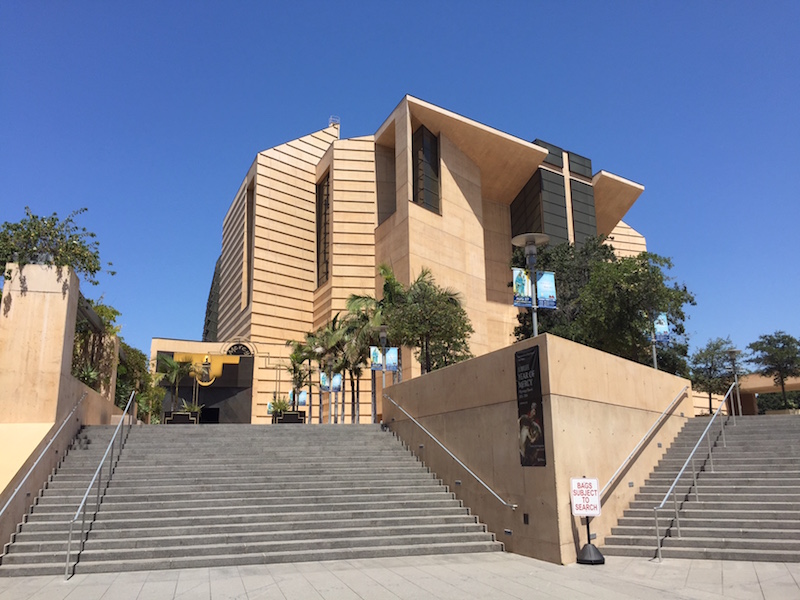
Thus began an inspired collaboration between the architect and the diocese, resulting in the first Roman Catholic Cathedral to be erected in the western United States in 30 years, completed in the spring of 2002. To visit, park on-site (entrance on Temple Street) and ascend the stairs that lead to an expansive plaza featuring fountains, a gift shop, and a café with indoor and outdoor seating. Once you duck inside, the grandeur of the interior space reveals itself. Ultra-modern, cool in atmosphere and temperature, the eye is drawn award to sky lights and myriad electrical features that hang over the pews like stars.
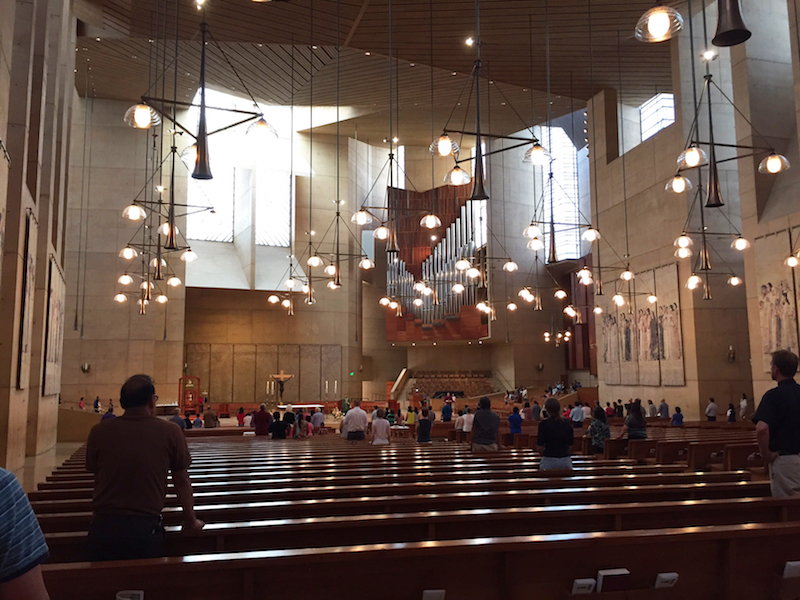
Moneo’s soaring edifice beckons, and the architecture of the Cathedral is a marvel—at once calming and majestic, of-the-moment yet timeless. The space abounds with works by many well-known contemporary artists—most with connections to Southern California—including elaborate bronze doors by the late Robert Graham, magnificent tapestries by John Nava that line the walls, the crucifix by Simon Toparovsky, and many other important and beautiful works.
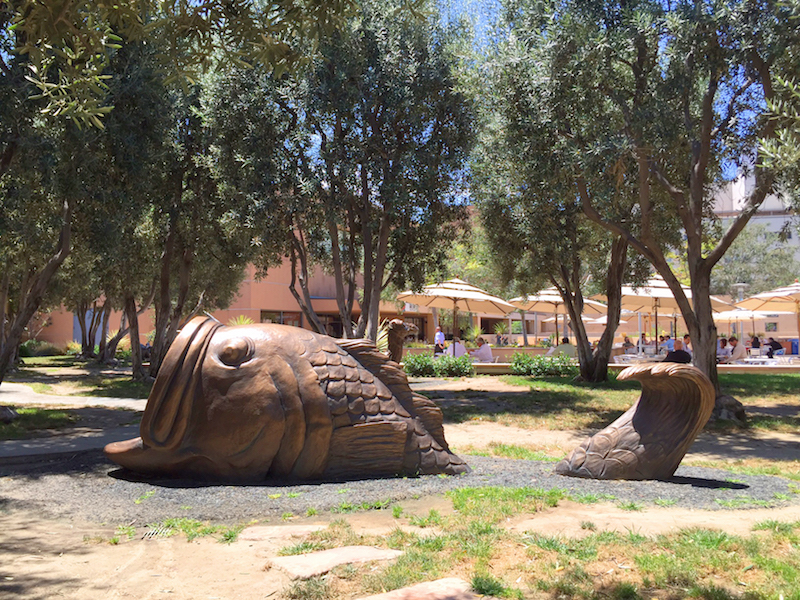 Young children will enjoy playing in the Children’s Garden that includes numerous climbing/play sculptures based on animals in the Bible, and a snake-themed path that runs through it.
Young children will enjoy playing in the Children’s Garden that includes numerous climbing/play sculptures based on animals in the Bible, and a snake-themed path that runs through it.
But in keeping with our Spanish theme, visitors to the church should especially note the 17th-century, gilded, black walnut, Spanish Baroque retablo installed at the end of the south walkway. A retablo is a shelf above the back of an altar to support ornaments, pictures, and statues. This one, measuring about twenty-six feet wide and twenty feet high, is an elaborately carved, polychrome and gilded construction that depicts a crucifix surrounded by saints, with the Madonna and Child overhead. Four twisted columns, each carved from a single walnut trunk, support the upper part of the central retablo.
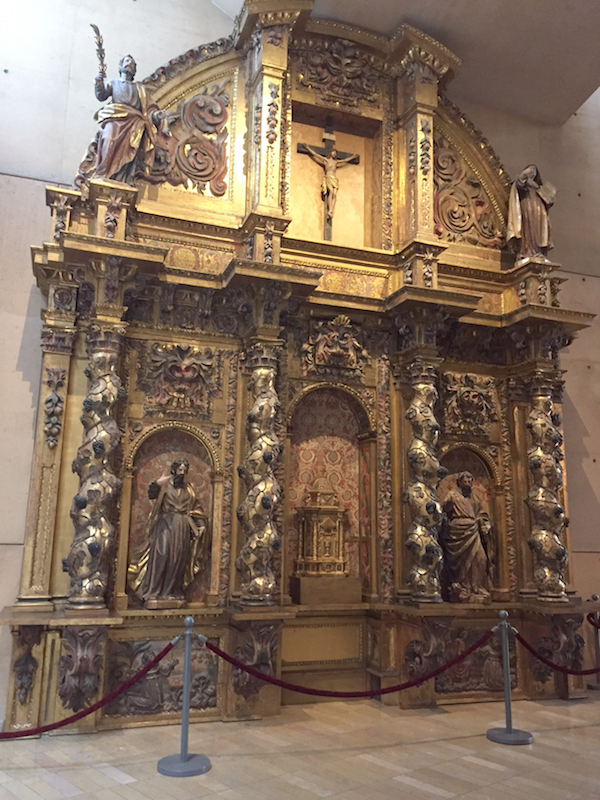
It can be hard to imagine how such an old, large, and beautiful object made halfway around the world came to live here in Los Angeles. This retablo can be traced to 1687 when Domingo Angel, a wealthy silk-manufacturer from the Spanish town of Burgos, had it installed in a chapel in the nearby village, Ezcaray. It is believed to be the work of a single craftsman.
The chapel was dismantled in 1925, and the retablo was sold to a New York art dealer to raise funds for the impoverished village. Later, Pasadena antique dealer Raymond Gould acquired it. Shortly after he died, a consortium of people purchased it for use in a Los Angeles cathedral then envisioned on Wilshire Boulevard. In the meantime, the retablo was transported to Mission San Fernando for storage. In 1953 it was installed in the newly erected student chapel of Queen of Angels Seminary, adjacent to the mission. It remained there until the decision was made to place it in the new Cathedral, where you can visit it today
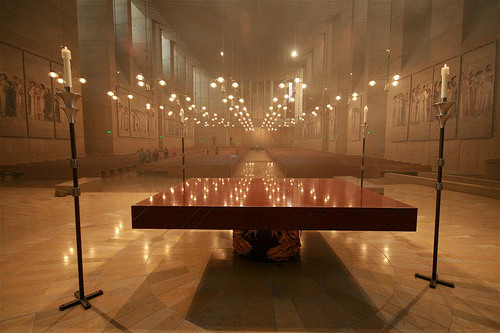 Downstairs is a vast mausoleum with 6000 crypts, including that of the Archbishop’s patron saint, Vibiana, a Roman martyr to whom the cathedral is dedicated. Here is a great article about the space from Atlas Obscura, with more (excellent) photographs of the building’s artwork and crypts.
Downstairs is a vast mausoleum with 6000 crypts, including that of the Archbishop’s patron saint, Vibiana, a Roman martyr to whom the cathedral is dedicated. Here is a great article about the space from Atlas Obscura, with more (excellent) photographs of the building’s artwork and crypts.
See
Next, head west to LACMA’s permanent collection of Modern art (Ahmanson Building, Level 2), which features key works by Spaniards Pablo Picasso and Juan Miró. Start with Picasso’s early Blue Period, represented by Portrait of Sebastia Juñer Vidal. Next, stroll through the galleries to view numerous other examples of his sculpture, drawings, and later iconic paintings, such as the intense Weeping Woman with Handkerchief (1939), which expresses the artist’s anguish over the Spanish Civil War. Together these many works offer a sense of the breadth of Picasso’s oeuvre and how his work changed over time.
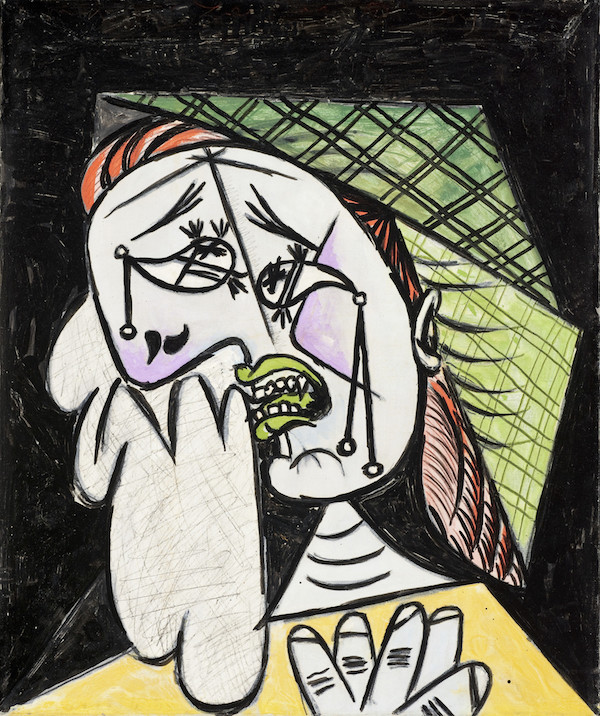
Pablo Picasso (Spain, 1881-1973)
Weeping Woman with Handkerchief, 1937
Oil on canvas
21 x 17 1/2 in. (53.34 x 44.45 cm)
Los Angeles County Museum of Art, Gift of Mr. and Mrs. Thomas Mitchell
© 2007 Estate of Pablo Picasso/Artists Rights Society (ARS), New York
Photo © Museum Associates/LACMA
If you’re curiosity has been piqued for more Picasso, check out LACMA’s new exhibition, Picasso and His Printers, on display through November 27th. Fourteen prints created at various points during his long artistic life attest to Picasso’s enduring fascination with the medium, as well as how his collaborations with master printers were critical to his exploration of graphic art.
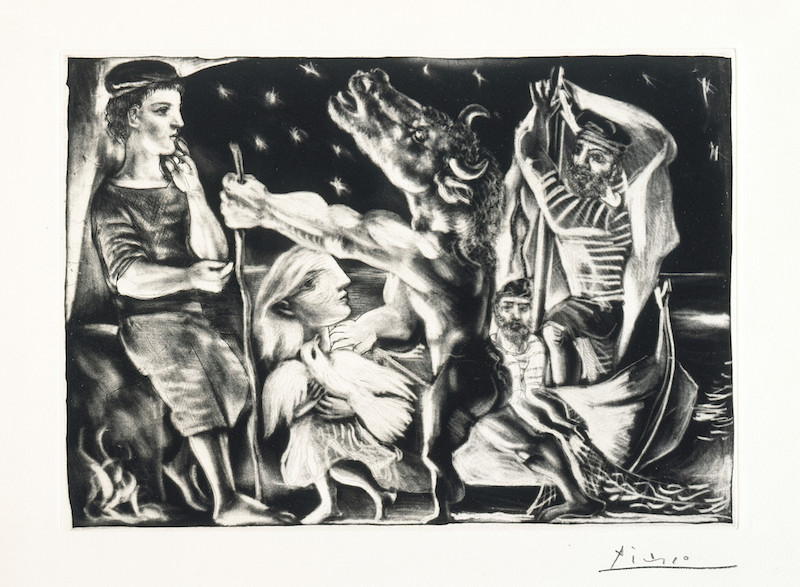
Blind Minotaur Led through the Night by Girl with Fluttering Dove, 1934
Edition of 250, Burnished aquatint
Plate (Plate): 9 3/4 x 13 11/16 in.
Mat: 18 × 22 in. (45.72 × 55.88 cm)
Los Angeles County Museum of Art, Graphic Arts Council Fund (M.77.23)
© Estate of Pablo Picasso / Artists Rights Society (ARS), New York
photo © Museum Associates/LACMA
Also on this same floor are two paintings and a sculpture by Barcelona’s Joan Miró. Especially in the paintings on view, Animated Forms and Group of Figures, visitors can glean evidence of Miró’s rejection of the constraints of traditional paintings and desire to use colors and shapes in symbolic, rather than literal, ways.
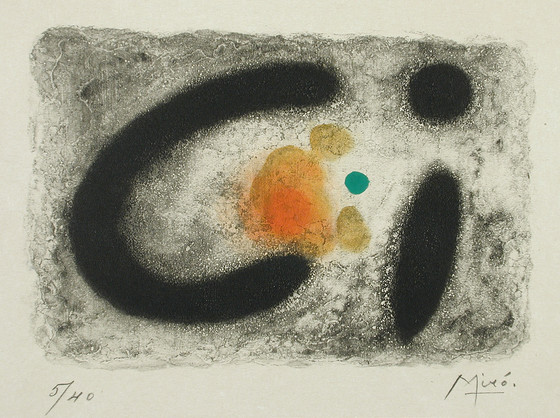
© 2015 Successió Miró / Artists Rights Society (ARS), New York / ADAGP, Paris
And on December 4, a new show showcasing Picasso’s relationship with Diego Rivera and the influence of each of them on each other and Modernism, opens; Picasso and Rivera: Conversations Across Time will be open until May 7, 2017.
Eat
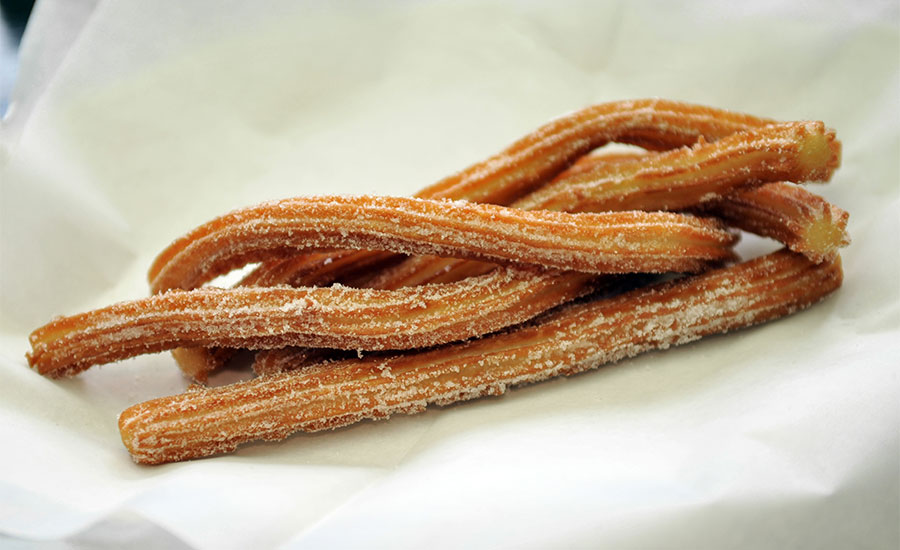
Now that you’ve taken in all of that art and architecture, you are justifiably ready for an afternoon snack. We’ve got churros con chocolate in mind, and just the cozy Westside nook to try them: Churros Calientes (11521 Santa Monica Boulevard). Tucked next door to Laemmle’s Royal Theater, you may have passed this sweet café a bunch of time without noticing it. Once you stop in to sample their delicate donuts served with a cup of thick rich chocolate for dipping, that won’t happen again. Believe it or not, this dish is a traditional Madrid breakfast dish, but it makes a decadent treat any time of day. And in case you are wondering, it is perfectly acceptable to drink the chocolate straight from the cup when the churros are gone!
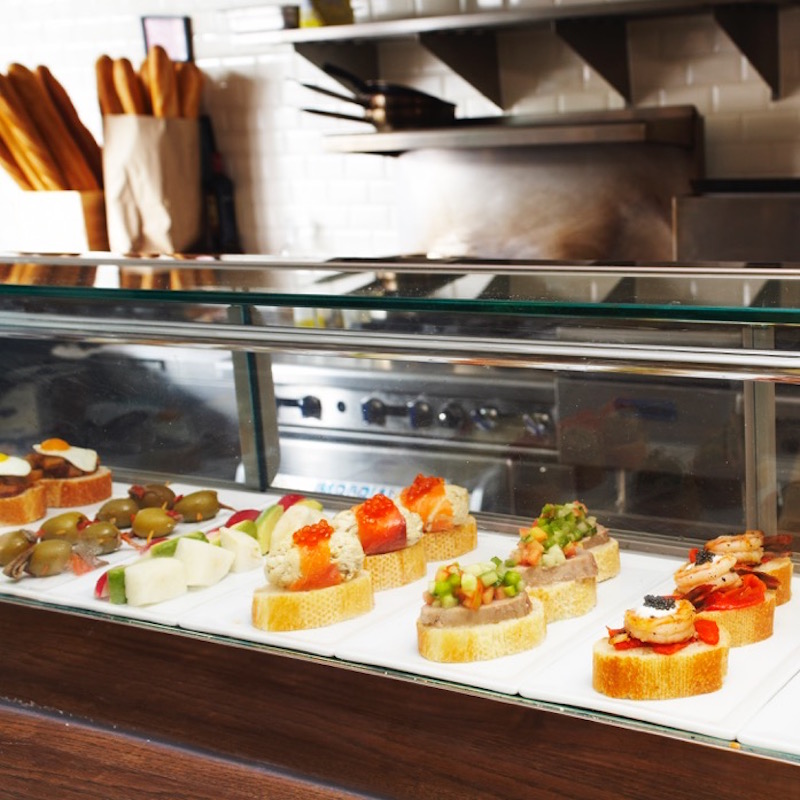
Of course, Spain is also famous for tapas—appetizers that started their culinary life as bar food. Today tapas have evolved into a specialized cuisine of their own, and now even non-Spanish restaurants that feature small plates will sometimes refer to their service as tapas-style.For an as-close-to-real Spanish tapas experience as can be found here at home, head further west to Bar Pintxo in Santa Monica (109 Santa Monica Boulevard). Bar Pintxo sports much of the look and feel of a small Spanish cafe, including two kinds of cured ham perched atop the bar on carving apparatuses called jamoneros. These specimens get whittled away during the course of a week to feed customers hungry for authentic Spanish jamón. Other tapas classics on the menu are patatas bravas (crispy potato chunks), tortilla Española (an egg dish), many seafood options, plus meatballs, croquettes, and more. When you’re full, Santa Monica’s pretty Palisades Park is just down the block for a stroll overlooking the Pacific, and if you squint you can pretend it’s the Mediterranean Sea.
Read
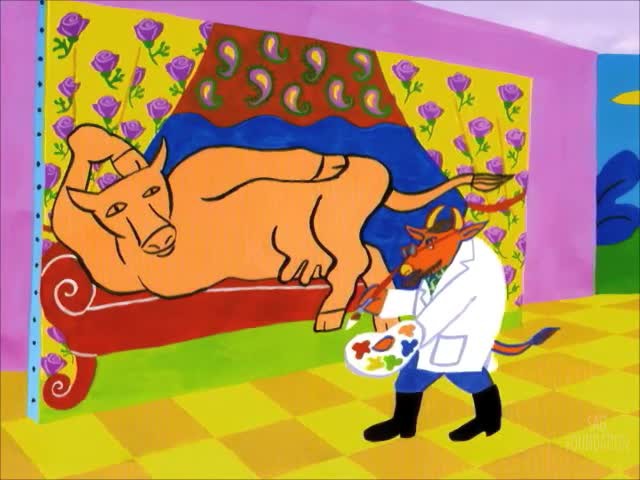 Many acclaimed books and movies about Spain are geared toward older audiences (teens may have already read The Sun Also Rises, Ernest Hemingway’s novel about a group of American and British expatriates who travel from Paris to Pamplona to experience the running of the bulls). If you’re looking for a great teenage and adult read, look into Carlos Ruiz Zafón‘s Shadow of the Wind, which is set in Barcelona. If you have younger readers in tow on this journey, check out the children’s book When Pigasso met Mootisse by Nina Laden, a cheeky homage to Pablo Picasso’s and Henri Matisse’s real-life friendship and rivalry. The funny pictures and lively story are a fun prelude to the LACMA visit.
Many acclaimed books and movies about Spain are geared toward older audiences (teens may have already read The Sun Also Rises, Ernest Hemingway’s novel about a group of American and British expatriates who travel from Paris to Pamplona to experience the running of the bulls). If you’re looking for a great teenage and adult read, look into Carlos Ruiz Zafón‘s Shadow of the Wind, which is set in Barcelona. If you have younger readers in tow on this journey, check out the children’s book When Pigasso met Mootisse by Nina Laden, a cheeky homage to Pablo Picasso’s and Henri Matisse’s real-life friendship and rivalry. The funny pictures and lively story are a fun prelude to the LACMA visit.
For children more interested in realism, Picasso and the Girl with a Ponytail is a lovely picture book by Laurence Anholt that tells the true story of a French girl named Sylvette David who met Picasso in the South of France and eventually became one of his models, as well as an artist in her own right.
Written by Stacey Ravel Abarbanel

